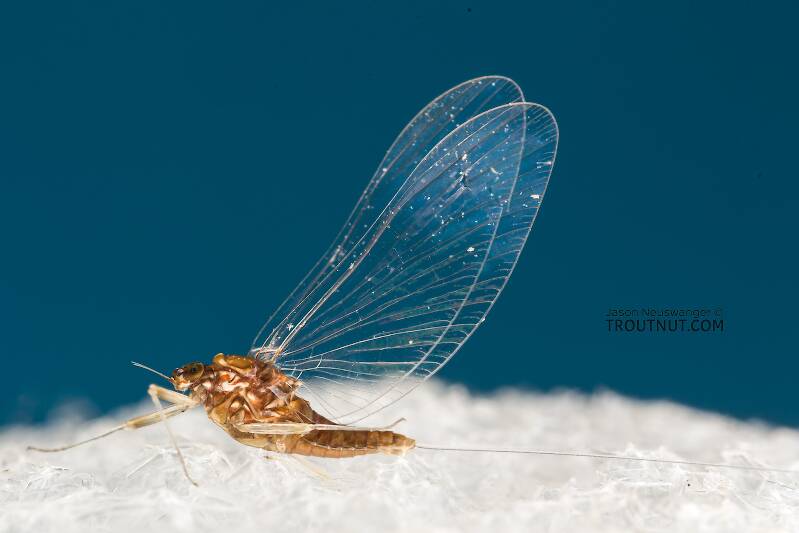
Blue-winged Olives
Baetis
Tiny Baetis mayflies are perhaps the most commonly encountered and imitated by anglers on all American trout streams due to their great abundance, widespread distribution, and trout-friendly emergence habits.
Featured on the forum

Troutnut is a project started in 2003 by salmonid ecologist Jason "Troutnut" Neuswanger to help anglers and
fly tyers unabashedly embrace the entomological side of the sport. Learn more about Troutnut or
support the project for an enhanced experience here.
Gray-Winged Brown Quills
Like most common names,"Gray-Winged Brown Quill" can refer to more than one taxon. They're previewed below, along with 1 specimen. For more detail click through to the scientific names.
Mayfly Species Baetis intercalaris
These are very rarely called Gray-Winged Brown Quills.
Mayfly Species Acentrella turbida
These are very rarely called Gray-Winged Brown Quills.
Although these mayflies are tiny, in places their numbers compensate for their small size and make for excellent hatches.
Rick Hafele and Dave Hughes in Western Mayfly Hatches rate turbida as one of the three most "key" western species of Baetidae, alongside Baetis tricaudatus and Diphetor hageni. In the West, turbida is more variable in size and appearance than its eastern iteration, in keeping with the large and varied regions it inhabits. It can run as small as 3.5 mm and as large as 5 mm, the larger sizes tending to be more brownish. It is often confused with the smaller broods of Diphetor hageni, but its conical mesonotal projection, lack of hind-wings, exaggerated turbinate eyes (hence its name) and stockier build help to differentiate it.
They are often found on the water with a mix of other Baetidae mayflies, making for very challenging fishing.
Rick Hafele and Dave Hughes in Western Mayfly Hatches rate turbida as one of the three most "key" western species of Baetidae, alongside Baetis tricaudatus and Diphetor hageni. In the West, turbida is more variable in size and appearance than its eastern iteration, in keeping with the large and varied regions it inhabits. It can run as small as 3.5 mm and as large as 5 mm, the larger sizes tending to be more brownish. It is often confused with the smaller broods of Diphetor hageni, but its conical mesonotal projection, lack of hind-wings, exaggerated turbinate eyes (hence its name) and stockier build help to differentiate it.
They are often found on the water with a mix of other Baetidae mayflies, making for very challenging fishing.
See 3 more specimens...
References
- Hafele, Rick and Hughes, Dave. 2004. Western Mayfly Hatches. Frank Amato Publications.



